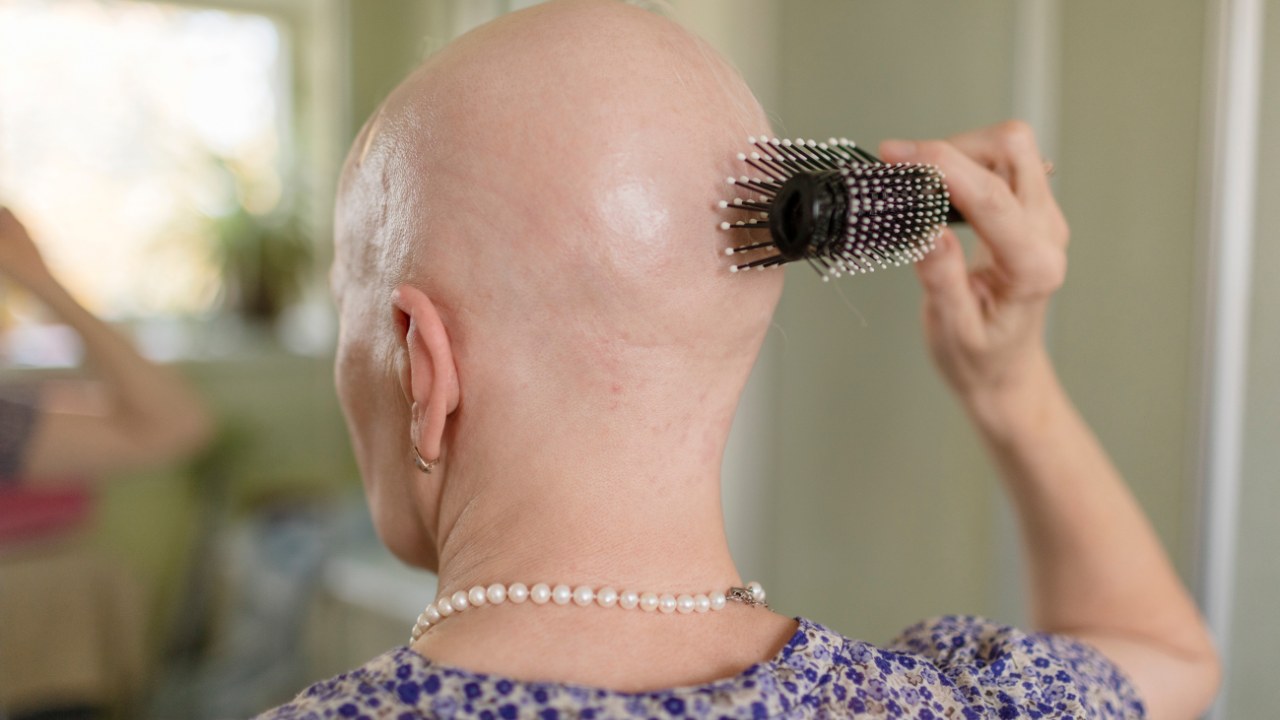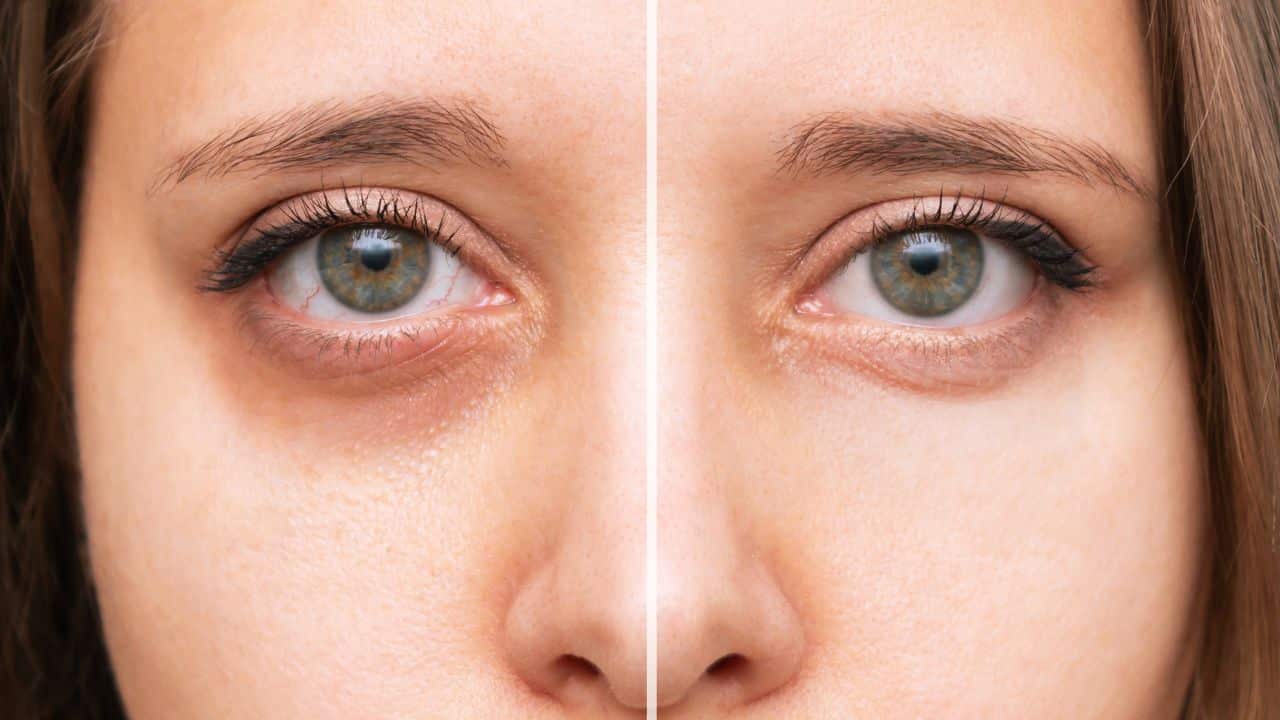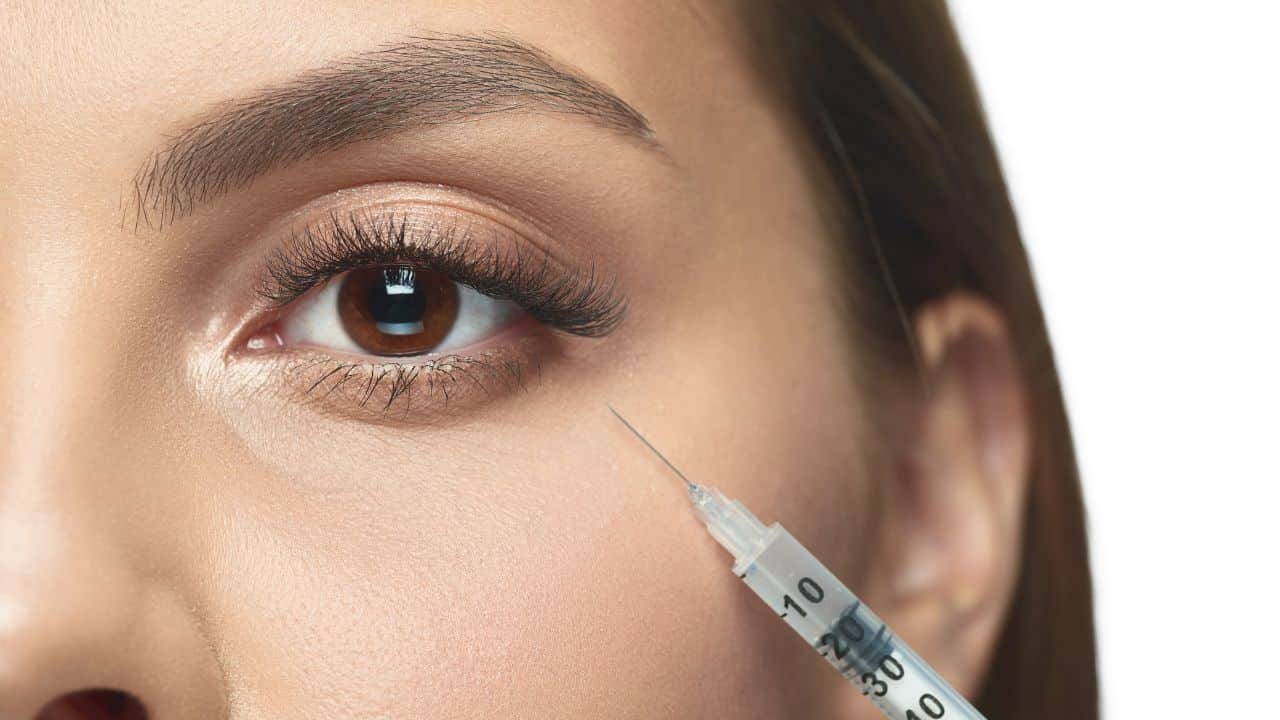Noticing more hair in the shower drain or on your brush? Does your once-full ponytail seem a little… wispy these days?
Hair loss can be a frustrating and emotionally challenging experience, especially for androgenetic alopecia women. If you’ve been diagnosed with androgenetic alopecia, also known as female pattern hair loss, you’re certainly not alone. This common condition affects millions of women and can chip away at our confidence.
But here’s the good news: there are options! Let me help you explore a safe and promising treatment called PRP therapy. This innovative approach utilizes your body’s natural healing potential to revitalize your hair follicles and potentially promote regrowth.
Whether you’re just starting to experience hair loss or have been dealing with it for some time, keep reading to understand how PRP therapy might help you reclaim your confidence and achieve a thicker, healthier head of hair.
What Is Androgenetic Alopecia Women
Androgenetic alopecia, commonly referred to as female pattern hair loss (FPHL) when discussing women, is a type of hair loss primarily driven by genetic and hormonal factors.
It’s the most common form of hair loss in women and often becomes noticeable after menopause, although it can start as early as puberty. Thus, getting the right treatment for alopecia is crucial!
Unlike men, who often experience a receding hairline and bald patches, women typically notice a general thinning of hair, especially at the crown of the head. The frontal hairline usually remains unaffected.
Androgens, particularly testosterone and its derivative dihydrotestosterone (DHT), play a significant role. Although these hormones are present in smaller amounts in women, they can still significantly impact hair growth and health.
Causes of Androgenetic Alopecia in Females
Understanding the causes and contributing factors of this form of hair loss can help manage expectations and seek appropriate treatment. Here’s an in-depth look at what causes androgenetic alopecia in females:
Genetic Factors
The primary cause of androgenetic alopecia in females is genetics. If a woman has family members who have experienced hair loss, she is more likely to develop it herself.
The condition involves a genetically determined sensitivity to the effects of dihydrotestosterone (DHT), a derivative of testosterone, which plays a significant role in hair thinning and loss. The genes involved can be inherited from the maternal or paternal side of the family.
Hormonal Imbalances
Androgens, including testosterone and DHT, are present in females in smaller amounts than males.
However, even these lower levels can lead to hair loss if one is sensitive to androgens. This sensitivity causes the hair follicles to miniaturize, leading to thinner, shorter hair and, eventually, a decrease in hair production.
Hormonal changes related to menopause can exacerbate this process, as the body’s estrogen levels, which counteract androgen effects, decline. An effective menopause hormone treatment can make things easier for you.
Aging
Aging naturally affects hair growth cycles. With age, the rate of hair growth slows down, and the hair follicles produce thinner, less pigmented hairs. The onset and progression of androgenetic alopecia in females often correlate with hormonal changes linked to aging, particularly around menopause.
Medical Conditions
Certain medical conditions can exacerbate or mimic the pattern of hair loss seen in androgenetic alopecia.
These include polycystic ovary syndrome (PCOS), which is associated with higher levels of androgens, thyroid disorders, and other endocrine disorders. Identifying and treating any underlying conditions is crucial in managing hair loss effectively.
Medication and Treatments
Some medications can cause hair loss as a side effect. These include chemotherapy drugs, blood thinners, and certain types of birth control pills that may influence hormone levels.
Women experiencing hair loss should review their medications with their healthcare provider to determine if their hair loss could be drug-related.
Nutritional Deficiencies
Although less directly connected to androgenetic alopecia, poor nutrition can exacerbate hair loss. Deficiencies in vital nutrients like iron, zinc, vitamin D, and protein are crucial for maintaining healthy hair growth.
Ensuring a balanced diet rich in these nutrients can help mitigate hair loss and support overall hair health.
Environmental Factors
External factors such as stress, smoking, and pollution exposure can also contribute to hair thinning and loss. Chronic stress, in particular, can impact the body’s hormone levels and exacerbate hair loss processes.
Autoimmune Influences
While not a direct cause of androgenetic alopecia, autoimmune reactions can exacerbate or complicate the pattern of hair loss.
Conditions such as alopecia areata, where the immune system attacks hair follicles, can be differentiated from androgenetic alopecia by a dermatologist through specific patterns and types of hair loss.
PRP Treatment for Androgenetic Alopecia in Women
Platelet-rich plasma (PRP) therapy has emerged as an innovative and promising treatment for androgenetic alopecia, particularly in women. This treatment involves using a patient’s blood to stimulate hair growth, making it a natural and relatively low-risk option.
Effectiveness of PRP Therapy
PRP therapy has been studied for its potential to treat various types of hair loss, including androgenetic alopecia. The results can vary, but many patients report:
- Increased Hair Density: Many studies have shown that PRP can increase the number of hair follicles in the growth phase, leading to denser hair.
- Thicker Hair Shafts: PRP can enhance the hair shaft’s thickness, contributing to an overall fuller appearance of the hair.
- Slowed Hair Loss: PRP may help slow down the rate of hair shedding, stabilize the condition, and preserve the existing hair.
The Treatment Process
The PRP treatment regimen typically consists of three sessions spaced about a month apart, followed by maintenance treatments every 4-6 months. However, treatment protocols can vary based on individual needs and the severity of hair loss.
Who is a Good Candidate?
PRP is particularly suitable for women in the early stages of hair thinning, where the hair follicles are still functional but miniaturized. Women with more advanced hair loss may not see significant results, as dormant hair follicles might not respond to the treatment as well.
How To Regrow Thinning Hair in Females?

Thinning hair is a common issue among women with androgenic alopecia, often causing significant distress and impacting self-esteem. Fortunately, several effective strategies can help promote hair regrowth and improve the overall health of your hair.
Here’s a detailed guide on how to regrow thinning hair for females:
Medical Treatments
- Minoxidil (Rogaine): This is the only FDA-approved topical medication for female hair loss. It works by prolonging the growth phase of hair follicles and increasing blood flow to the scalp, enhancing the hair shaft’s thickness and stimulating new growth. Consistency is key, as it typically takes several months to see noticeable results.
- Spironolactone: This medication is used off-label for female hair loss, especially in cases of high androgen levels, as it acts as an androgen blocker. It’s particularly effective for women experiencing hair thinning due to hormonal imbalances.
- Finasteride: Although less commonly prescribed for women than men, finasteride can effectively treat female pattern hair loss by inhibiting the production of dihydrotestosterone (DHT), a hormone associated with hair loss. However, it is generally only recommended for postmenopausal women due to potential risks during pregnancy.
Nutritional Support
A well-balanced diet rich in vitamins and minerals can profoundly impact hair health. Key nutrients include:
- Iron: Iron deficiency is a common cause of hair loss, which can be corrected by consuming iron-rich foods like spinach, lentils, and red meat.
- Vitamin D: Low levels of vitamin D are linked to hair loss. Consider getting your levels tested and incorporating Vitamin D supplements if necessary.
- Omega-3 Fatty Acids: In fish like salmon and mackerel, omega-3s are vital for hair health, promoting shinier, healthier hair.
- Protein: Hair is primarily made of protein, so adequate protein intake is crucial for hair growth. Include ingredients like chicken, turkey, beans, and dairy products.
Scalp Health
Maintaining a healthy scalp environment is essential for hair regrowth. This includes:
- Regular Cleansing: Keeping the scalp clean and free from buildup can encourage healthy hair growth. Use a gentle shampoo that doesn’t strip your scalp of its natural oils.
- Scalp Massage: Regular scalp massages can increase blood circulation to the scalp, enhancing the nourishment of your hair follicles. This can be done during shampooing or when applying oils.
- Avoiding Harsh Treatments: Avoid chemical treatments, heat styling, and tight hairstyles that can lead to hair breakage and loss.
Low-Level Laser Therapy (LLLT)
Using devices such as laser combs and helmets, LLLT stimulates cellular activity within the follicles to promote hair growth and thickness. This noninvasive therapy is gaining popularity due to its ease of use and efficacy in treating various types of hair loss.
Natural Remedies
While less scientifically proven, many individuals find natural remedies helpful for hair regrowth:
- Essential Oils: Oils such as peppermint and rosemary have been shown to stimulate hair growth when used in scalp massages.
- Onion Juice: Some studies suggest that the sulfur content in onion juice can boost collagen production, potentially aiding in hair regrowth.
Lifestyle Adjustments
Reducing stress through yoga, meditation, and regular exercise can significantly impact hair health. Stress is a known contributor to hair loss, and managing it effectively can help reverse its effects.
Consult a Professional
If you’re experiencing significant hair loss, it’s always a good idea to consult with a healthcare provider or a trichologist. They can thoroughly assess and recommend a treatment plan tailored to your condition.
Can Female Androgenetic Alopecia Be Reversed?
Androgenetic alopecia, commonly called female pattern hair loss, is a widespread condition characterized by thinning hair, primarily on the crown and top of the scalp.
While genetics and hormonal levels influence this condition, many women wonder whether it can be reversed. The answer is nuanced—while complete reversal may not be possible for everyone, significant improvement and management of the condition are achievable with the right approaches.
Understanding Reversibility
First, it’s essential to clarify what “reversal” means in the context of androgenetic alopecia. Reversal typically implies restoring the hair density and scalp coverage to what it was before the onset of hair loss.
For most women, absolute reversal might not be feasible, especially if the hair loss has been progressing untreated for an extended period. However, treatments can often stop further loss and partially restore hair density.
Effective Strategies for Managing Female Pattern Hair Loss
- Early Intervention: The key to maximizing the chances of reversing hair thinning due to androgenetic alopecia is to start treatment early. The earlier you begin, the more effective treatments tend to be, as they can preserve hair follicle function before significant miniaturization occurs.
- Minoxidil: The most commonly prescribed treatment for female pattern hair loss is topical Minoxidil (Rogaine). This over-the-counter medication can slow hair loss and stimulate regrowth. Regular use of Minoxidil has been shown to improve hair density and increase the diameter of individual hair strands.
- Hormone Regulation: Medications that affect hormonal balance can also benefit women whose hair loss is linked to androgen levels. Drugs like Spironolactone, an androgen blocker, can reduce the effects of male hormones on the hair follicles. This is particularly useful in women who have an excess of androgens.
- Low-Level Laser Therapy (LLLT): Devices that use specific wavelengths of light can stimulate hair follicles and enhance hair growth. Regularly using FDA-approved LLLT devices has improved hair thickness and overall scalp coverage in some women.
- Nutritional Support: Ensuring a diet rich in vitamins and minerals supports hair health. Iron, vitamin D, zinc, and omega fatty acids are important for hair growth. Supplements should be considered under the guidance of a healthcare provider.
- Hair Transplant Surgery: Hair transplant surgery might be an option for significant thinning where other treatments are ineffective. This procedure involves moving hair from areas of dense growth to thinning areas, providing a more permanent solution.
Lifestyle and Cosmetic Approaches
Scalp Concealers: While not reversing hair loss, cosmetic options such as scalp concealers can help camouflage thinning areas and create the appearance of denser hair.
Hair Styling Techniques: Certain hairstyles can make hair appear fuller and help disguise thinning areas. Volumizing shampoos and conditioners contribute to a fuller appearance.
Emotional and Psychological Support
It’s important to address the psychological impact of hair loss. Many women benefit from support groups or counseling, which can help them cope with the condition.
Final Words
We understand that hair loss can be a profoundly personal concern. Each woman’s decision to explore treatment options is unique. PRP therapy offers a promising, minimally invasive, and potentially effective approach to addressing hair loss and promoting regrowth.
Remember, you don’t have to navigate this alone.
At PRP Treatment Beverly Hills, we’re committed to empowering women with knowledge and personalized treatment plans. Contact our clinic if you want to learn more about PRP therapy and whether it might be right for you.
We offer consultations to address your hair loss concerns and explore potential solutions. Together, we can create a plan to help you achieve a healthier scalp and regain the confidence of feeling your best.





